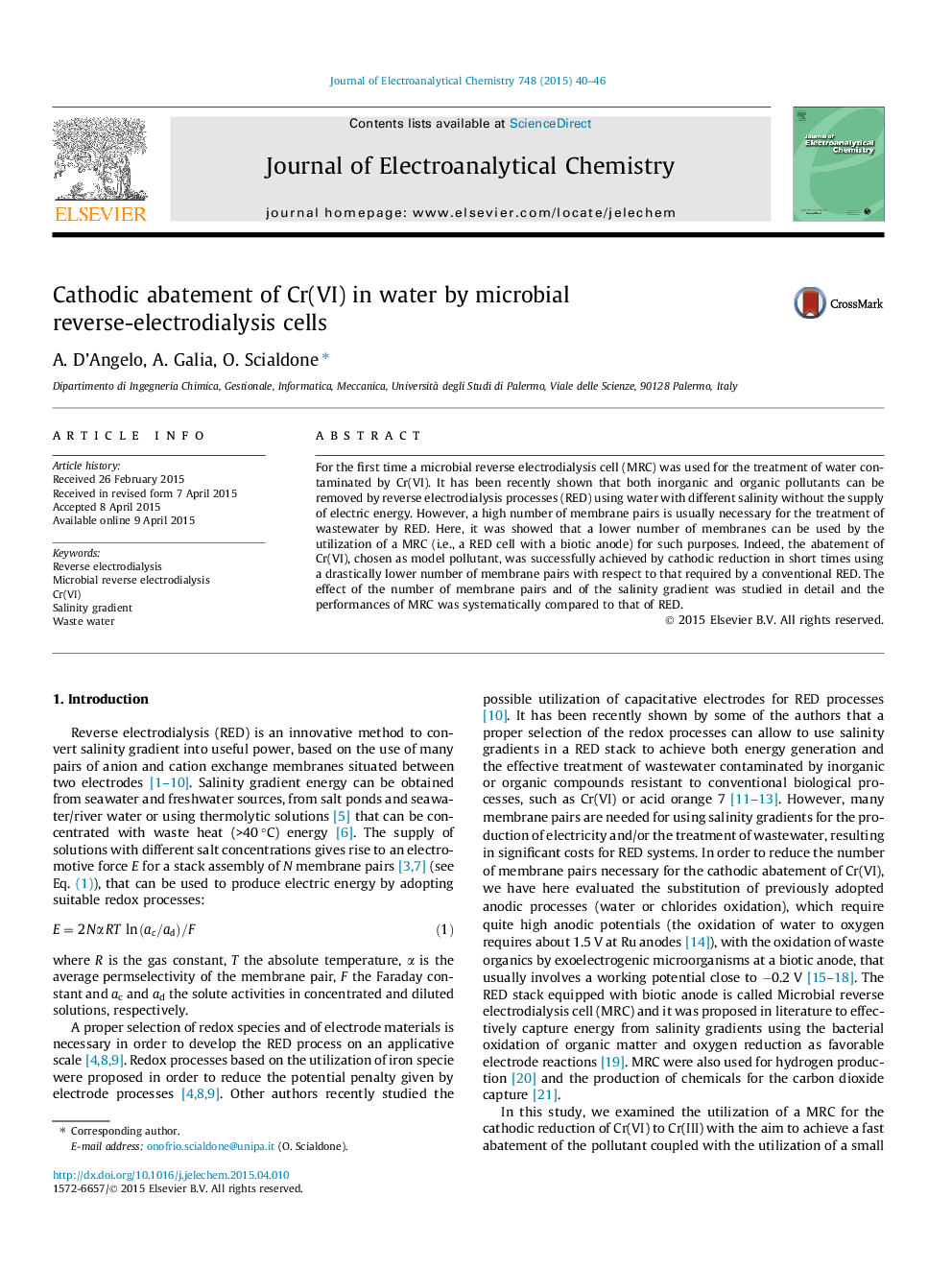| Article ID | Journal | Published Year | Pages | File Type |
|---|---|---|---|---|
| 218377 | Journal of Electroanalytical Chemistry | 2015 | 7 Pages |
•The electrochemical abatement of Cr(VI) by microbial reverse electrodialysis was studied.•The abatement of Cr(VI) was achieved using a small number of membrane pairs.•Increasing the salinity gradient enhances the rate of Cr(VI) abatement.•Increasing the number of membrane pairs enhances the rate of Cr(VI) abatement.•The effect of the biotic anode on the process was evaluated.
For the first time a microbial reverse electrodialysis cell (MRC) was used for the treatment of water contaminated by Cr(VI). It has been recently shown that both inorganic and organic pollutants can be removed by reverse electrodialysis processes (RED) using water with different salinity without the supply of electric energy. However, a high number of membrane pairs is usually necessary for the treatment of wastewater by RED. Here, it was showed that a lower number of membranes can be used by the utilization of a MRC (i.e., a RED cell with a biotic anode) for such purposes. Indeed, the abatement of Cr(VI), chosen as model pollutant, was successfully achieved by cathodic reduction in short times using a drastically lower number of membrane pairs with respect to that required by a conventional RED. The effect of the number of membrane pairs and of the salinity gradient was studied in detail and the performances of MRC was systematically compared to that of RED.
